#Pharaoh Pinedjem I
Text
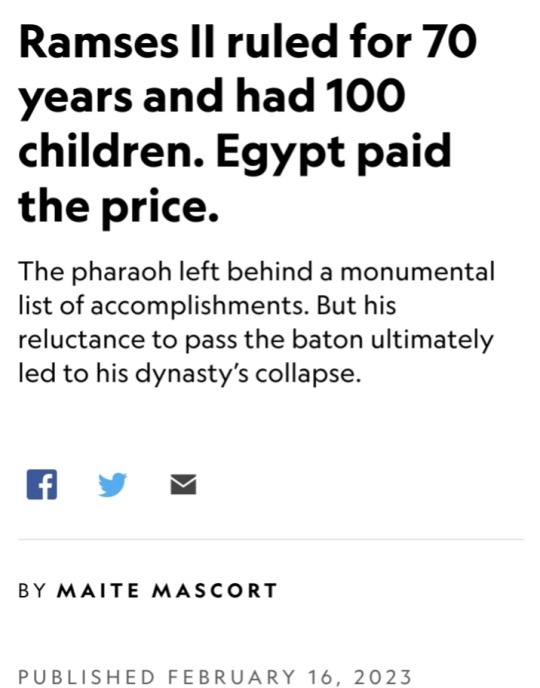

Few individuals in Egypt’s history have aroused as much curiosity, and as much skepticism, as Ramses II, third pharaoh of the 19th dynasty, whom history dubbed Ramses the Great.
Today, Ramses II is probably best known for leaving behind a monumental set of works — palaces, temples, statues, stelae — each one extolling his pharaonic achievements.
Every battle was a mighty triumph, every building spectacular, every statue and public work magnificent, every act a near superhuman achievement.
Ramses’ family came to power as outsiders.
They were northerners hailing from the Nile Delta and rose through military service, rather than southerners rising from elite circles in Thebes.
To rally support, Ramses II used these massive monuments to appeal to the people as part of a campaign to proclaim his greatness for all to see.
Ramses lived around 90 years and ruled for almost 70.
Thanks to his building campaigns, Egyptologists know much about his public accomplishments, but questions about his wives and children still remain.
Great royal wives
One of the most striking aspects of Ramses II’s story is the women who surrounded him:
Great royal wives and concubines, secondary wives and daughters, whom he sometimes “married,” for political show or perhaps for real.
He produced an extraordinary number of sons and daughters:
Some records say as many as a hundred. Because of his long reign, many of his children predeceased him.

Out of all of his wives, only two were known to have had prominent roles:
Nefertari and Isetnofret, the first two named great royal wives.
While the former figures prominently in Egyptian sources and countless representations of her exist, little is known of the latter, almost as if Ramses wanted her hidden.
It is only natural to wonder about the reasons for such unequal treatment.
When he became co-regent with his father, Seti I, Ramses II received a palace in Memphis, just south of the Nile Delta, and a large harem, including the first two great royal wives.
The origins of Nefertari and Isetnofret are unknown but that has not prevented the wildest of speculation about them.
Everything suggests that Nefertari was Ramses II’s favorite wife. Her beauty is attested to in the statues and paintings in her tomb in the Valley of the Queens.
However, it is uncertain what she actually looked like, since some images raise doubts about who is depicted.

For example, in Karnak, a small statue of Nefetari stands at the foot of a colossus representing Ramses II, her husband.
The colossus was later usurped by Pharaoh Pinedjem I, who had his name inscribed on it, and the features of both figures may have been modified.
Was only the name changed? Is that beautiful face still Nefertari’s? Egyptologists believe so.
Nefertari took part in official events alongside Ramses.
She was shown celebrating his coronation, in festivities of the god Min, and in Nebunenef’s enthronement as High Priest of Amun.
Her diplomacy culminated in a peace treaty between Ramses and the Hittites several years after the Battle of Kadesh (1274 B.C.) had resulted in a stalemate between the two powers.
Ramses II showed a clear predilection for Nefertari, devotion worthy of a great love story.
When he built the great temple of Abu Simbel, he made sure that Nefertari, then deceased, was on the facade, next to Tuya, his mother.

In this temple, Nefertari is transformed into Sopdet, the star Sirius, whose appearance presaged the Nile’s annual flooding.
Farther north, another smaller temple dug into rock is dedicated to Nefertari herself.
There, she is identified with the goddess Hathor. Carved into its facade is a tribute:
“Nefertari, she for whom the sun shines.”
Was Isetnofret the forgotten one? So it seems.
Until Nefertari died, around year 26 of Ramses II’s reign, Isetnofret’s likeness did not appear in the many temples the king built in Nubia, nor in those in Karnak and Luxor, where Nefertari is often portrayed.
Isetnofret was finally represented in some temples for her connection with her children.
Nefertari’s image may be seen in more places, but it was Isetnofret who bore her husband the two children closest to his heart.

Sons and daughters
Ramses II had a hundred or so sons and daughters with the wives in his harem.
Of his recognized children, some would play important roles, but only those born to Nefertari and Isetnofret appear on his monuments.
In the Nubian temple of Beit el Wali, a young Ramses, then co-regent with his father, Seti I, is shown suppressing a Nubian uprising.
The pharaoh’s royal chariot is flanked by two figures identified as Amenherkhepshef, his eldest child with Nefertari, and Khaemwaset, Isetnofret’s son.
Of all Ramses II’s sons, Khaemwaset is believed to have been his favorite.
Instead of taking up arms against his elder brother (also named Ramses), Khaemwaset became Grand Master of the Artisans of Ptah, a title in Memphite doctrine equivalent to High Priest of Amun in Thebes.
He also restored a number of pyramids in his father’s name. His work is still evident on the pyramid of Unas, from the 5th dynasty.
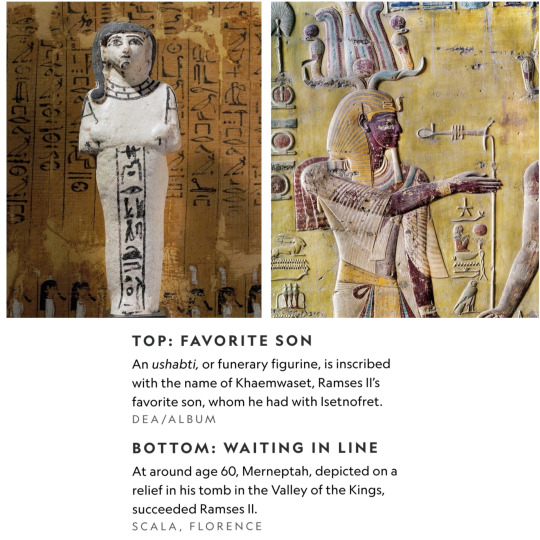
Khaemwaset also planned and directed the work of the “minor galleries,” the Serapeum at Saqqara, the collective tomb of the Apis, sacred oxen of Memphis.
Auguste Mariette’s 1850 excavation of the Serapeum revealed the mummy of a man named Khaemwaset, wearing a golden mask with several ushabtis.
It proved uncertain that it was the mummy of Ramses II’s son, and the location of Khaemwaset’s tomb remains unconfirmed. Much evidence suggests that it is in the necropolis of Saqqara.
The daughters of Ramses II’s great royal wives also held key positions in his court.
In fact, many became great royal wives themselves after marrying their own father.
It had become customary for 18th-dynasty pharaohs to marry their daughters.
While his great royal wife Tiye was alive, Amenhotep III married their daughter Sitamun.
Later, Akhenaten married at least two of the daughters he had with Queen Nefertiti.
No one knows if these marriages were consummated or purely ceremonial.

Ramses II appointed several daughters / great royal wives after the deaths of Nefertari and Isetnofret.
Bintanah (Isetnofret’s firstborn) was followed by Merytamon and Nebettawy (daughters of Nefertari) and Henutmire.
In addition to these daughters, other princesses outside the family also bore the title of Great Royal Wife, such as Maathorneferure, daughter of the Hittite king, and another Hittite princess whose name is unknown.
If Khaemwaset was Ramses II’s favorite son, everything points to Bintanath having been his preferred daughter.
She was given the titles of not only Great Royal Wife but also Lady of the Two Lands and Sovereign of Upper and Lower Egypt.
Bintanath occupies a privileged place on the facade of the temple of Abu Simbel. She and her sister Nebettawy appear on either side of the colossus.
Some historians believe Nebettawy’s mother was Isetnofret, but others consider her Nefertari’s daughter.
Fractured legacy
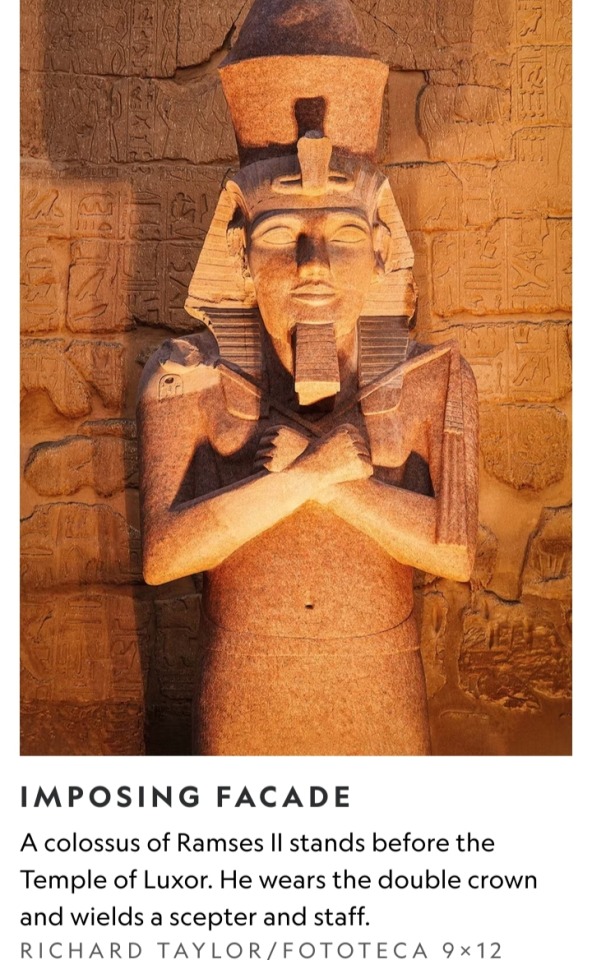
Ramses had no problems siring heirs with his many wives during his long life, but these sons would be forced to be patient; their father held tightly to his throne for almost 70 years.
Ramses had placed his children liberally throughout Egypt’s bureaucracies, corporations, priesthood, and military to foster loyalty he did not naturally inspire.
He was an outsider, a northerner hailing from the Nile Delta, disconnected from the wealthy elites in southern Thebes.
Ramses’ source of strength rested on ties to, not the moneyed or religious classes, but the military. Placing his sons in powerful positions across Egypt helped strengthen Ramses’ hold in these areas.
By the time Ramses II died in 1213 B.C., he was around 90 years old and had outlived many of these sons.
Amenherkhepshef, Ramses’ oldest son and crown prince, died when he was 25 years old.
Khaemwaset also did not outlive his great father and died in his mid-50s around 1215 B.C.
It would be a child of Isetnofret, her son Merneptah, who was 13th in line, who succeeded Ramses.
Merneptah was around 60 years old, well past middle age, when he became pharaoh and donned Egypt’s double crown.
After decades of waiting in the wings to take power, Merneptah might have expected a stable reign, like his father’s, but his hopes were in vain.
During his 10-year reign, his troops were able to defend Egypt successfully from a series of attacks from enemies in the east and west.
But the seeds sown by Ramses II would lead to chaos after Merneptah’s death.
Rivals for the throne, some of whom may have been sons of Ramses II, pushed Egypt into a period of decline and civil war.
By around 1189 B.C., the 19th dynasty would come to an end.

#Ramses II#Ramses the Great#Nefertari#Isetnofret#Seti I#Valley of the Queens#Pharaoh Pinedjem I#Hittites#Battle of Kadesh#Abu Simbel#Tuya#Amenherkhepshef#Khaemwaset#Auguste Mariette#Bintanath#Ancient Egypt#Egyptian Civilization#Egypt#egyptologist#Egyptology#Nineteenth Dynasty of Egypt#19th Dynasty of Egypt
19 notes
·
View notes
Photo
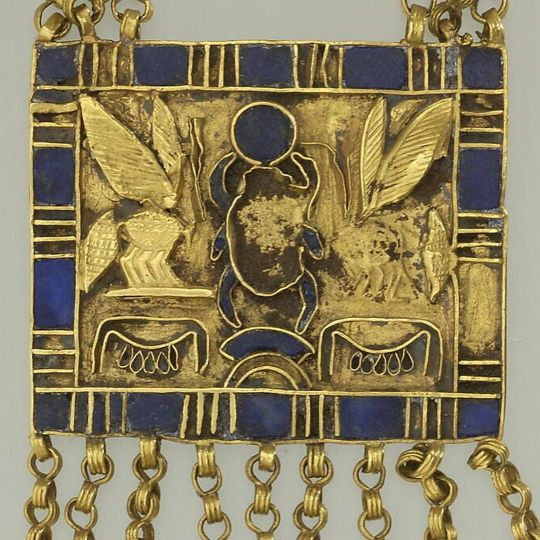
Pectoral Collar of Pinedjem I (1070-1032 BC) 21st Dynasty Pinedjem I (𓇋𓏠𓈖𓌸𓅮𓇛𓏭) “p3-nḏm=y mrı͗ ı͗mn” ‘Panedjemy, Beloved of Amun” was the High Priest 𓍛𓊹 “ẖm-nṯr” of Amun at Thebes 𓌀𓏏𓈈𓊖 ���w3s.t” in Ancient Egypt from 1070 to 1032 BC and the de facto ruler 𓋾𓏘𓄿𓀭 “ḥqA” of the south of the country from 1054 BC. He was the son of the High Priest Piankh. However, many Egyptologists today believe that the succession in the Amun priesthood actually ran from Piankh to Herihor to Pinedjem I (Wikipedia). The design of the pectoral displays two bees 𓆤 “bity” (symbol of kingship of Lower Egypt 𓇾𓇊 “t3-mḥw”, which is the northern Delta) on opposite sides of Khepri, the scarab beetle 𓐍𓊪𓂋𓂋𓆣 “ḫprr”, representing the rising sun in the east 𓋁𓃀𓏏𓏭𓈊 “3b.t”. Underneath the scarab beetle is the symbol for the rising sun 𓈍 “ḫ3”, and above is the sundisk 𓇋𓏏𓈖𓇳 “ı͗tn” being carried forward by Khepri 𓆣𓂋𓇌 “ḫpri”. Dimensions: Longueur : 60 cm Material : Gold Second Material : Lapis Lazuli Technique : chain, inlay cloisonnée and repoussage 📸 @museelouvre 𓋹𓎬𓋹𓎬𓋹𓎬𓋹𓎬𓋹𓎬𓋹𓎬𓋹𓎬𓋹𓎬𓋹𓎬𓋹𓎬𓋹𓎬𓋹𓎬𓋹𓎬𓋹𓎬𓋹𓎬𓋹𓎬 @egyptologylessons 𓋹𓊽𓋴𓆖𓎛𓇳𓎛 © 𓊁𓊁𓊁𓊁𓊁𓊁𓊁𓊁𓊁𓊁𓊁𓊁𓊁𓊁𓊁𓊁𓊁 #Ancientegypt #ägypten #egyptology #egypte #egitto #egipto #이집트 #egyptianjewelry #pharaoh #pinedjemi #highpriest #necklace #louvremuseum #lapislazuli #goldnecklace (at Louvre Museum Paris) https://www.instagram.com/p/CnZ-AabOaOh/?igshid=NGJjMDIxMWI=
#ancientegypt#ägypten#egyptology#egypte#egitto#egipto#이집트#egyptianjewelry#pharaoh#pinedjemi#highpriest#necklace#louvremuseum#lapislazuli#goldnecklace
92 notes
·
View notes
Photo
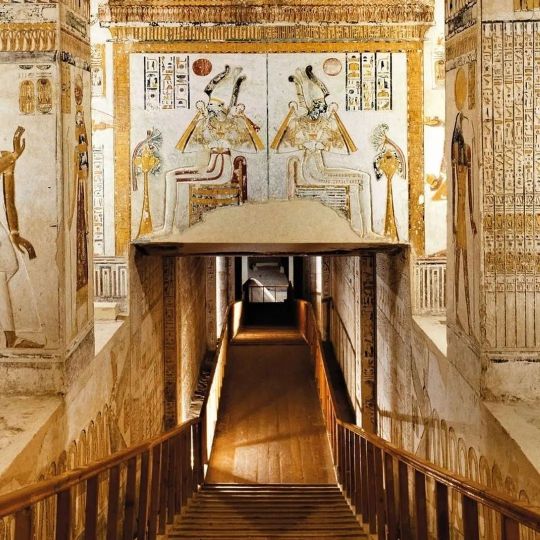
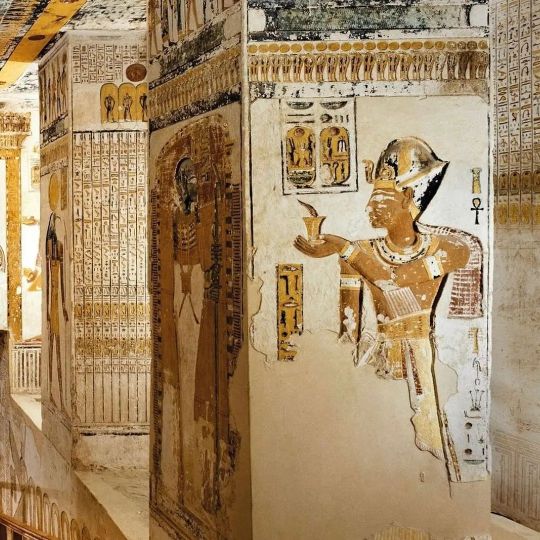

The Tomb of Ramessess VI
Ramesses VI Nebmaatre-Meryamun (sometimes written Ramses or Rameses, also known under his princely name of Amenherkhepshef C) was the fifth ruler of the Twentieth Dynasty of Egypt. He reigned for about eight years in the mid-to-late 12th century BC and was a son of Ramesses III and queen Iset Ta-Hemdjert. As a prince, he was known as Ramesses Amunherkhepeshef and held the titles of royal scribe and cavalry general. He was succeeded by his son, Ramesses VII Itamun, whom he had fathered with queen Nubkhesbed.
After the death of the ruling pharaoh, Ramesses V, who was the son of Ramesses VI's older brother, Ramesses IV, Ramesses VI ascended the throne. In the first two years after his coronation, Ramesses VI stopped frequent raids by Libyan or Egyptian marauders in Upper Egypt and buried his predecessor in what is now an unknown tomb of the Theban necropolis. Ramesses VI usurped KV9, a tomb in the Valley of the Kings planned by and for Ramesses V, and had it enlarged and redecorated for himself. The craftsmen's huts near the entrance of KV9 covered up the entrance to Tutankhamun's tomb, saving it from a wave of tomb robberies that occurred within 20 years of Ramesses VI's death. Ramesses VI may have planned and made six more tombs in the Valley of the Queens, none which are known today.
Egypt lost control of its last strongholds in Canaan around the time of Ramesses VI's reign. Though Egyptian occupation in Nubia continued, the loss of the Asiatic territories strained Egypt's weakening economy and increased prices. With construction projects increasingly hard to fund, Ramesses VI usurped the monuments of his forefathers by engraving his cartouches over theirs. Yet he boasted of having "[covered] all the land with great monuments in my name [...] built in honour of my fathers the gods". He was fond of cult statues of himself; more are known to portray him than any Twentieth-Dynasty king after Ramesses III. The Egyptologist Amin Amer characterises Ramesses VI as "a king who wished to pose as a great pharaoh in an age of unrest and decline".
The pharaoh's power waned in Upper Egypt during Ramesses VI's rule. Though his daughter Iset was named God's Wife of Amun, the high-priest of Amun, Ramessesnakht, turned Thebes into Egypt's religious capital and a second center of power on par with Pi-Ramesses in Lower Egypt, where the pharaoh resided. In spite of these developments, there is no evidence that Ramessesnakht's dynasty worked against royal interests, which suggests that the Ramesside kings may have approved of these evolutions. Ramesses VI died in his forties, in his eighth or ninth year of rule. His mummy lay untouched in his tomb for fewer than 20 years before pillagers damaged it. The body was moved to KV35 during the reign of Pinedjem I, and was discovered in 1898 by victor Loret.
#The Tomb of Ramessess VI#Twentieth Dynasty of Egypt#Valley of the Kings#pharaoh#ruler#history#history news#ancient historuy#ancient civilizations#ancient egypt#grave#ancient grave#art#artist#art work#afterlife#paintings#drawings#hieroglyphs#egyptian hieroglyphs
159 notes
·
View notes
Photo
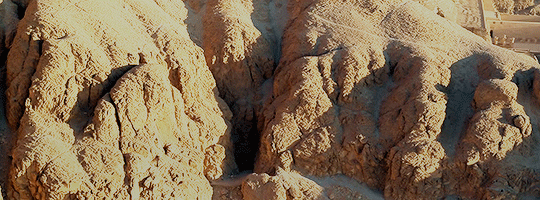
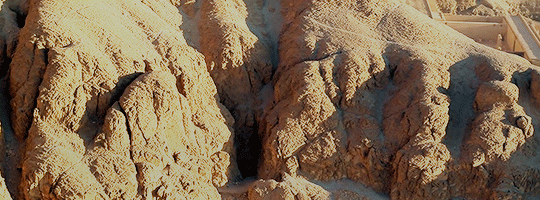
Tomb TT320, known as the Royal Cache, is an Ancient Egyptian tomb located next to Deir el-Bahri, in the Theban Necropolis, opposite the modern city of Luxor. It contains the last resting place of High Priest of Amun Pinedjem II, his wife Nesikhons, and other close family members, in addition to an extraordinary collection of mummified remains and funeral equipment of more than 50 kings, queens, and other New Kingdom members of the royalty, as it was later used as a cache for royal mummies during the Twenty-first Dynasty.
(17th Dynasty) Tetisheri (Great Royal Wife)*
(17th Dynasty) Seqenenre Tao (Pharaoh)
(17th Dynasty) Ahmose-Inhapi (Queen)
(17th Dynasty) Ahmose-Henutemipet (Princess)
(17th Dynasty) Ahmose-Henuttamehu (Great Royal Wife)
(17th Dynasty) Ahmose-Meritamon (Great Royal Wife)
(17th Dynasty) Ahmose-Sipair (Prince)*
(17th Dynasty) Ahmose-Sitkamose (Great Royal Wife)
(18th Dynasty) Ahmose I (Pharaoh)
(18th Dynasty) Ahmose-Nefertari (Great Royal Wife)*
(18th Dynasty) Rai (Royal Nurse of Ahmose-Nefertari)
(18th Dynasty) Siamun (Prince)
(18th Dynasty) Ahmose-Sitamun (Princess)
(18th Dynasty) Amenhotep I (Pharaoh)
(18th Dynasty) Thutmose I (Pharaoh)
(18th Dynasty) Baket/Baketamun (Princess)
(18th Dynasty) Thutmose II (Pharaoh)
(18th Dynasty) Iset (Great Royal Wife)
(18th Dynasty) Thutmose III (Pharaoh)
(18th Dynasty) Unknown man C (Possibly Senenmut)
(19th Dynasty) Ramesses I (Pharaoh)
(19th Dynasty) Seti I (Pharaoh)
(19th Dynasty) Ramesses II (Pharaoh)
(20th Dynasty) Ramesses III (Pharaoh)
(20th Dynasty) Ramesses IX (Pharaoh)
(21th Dynasty) Nodjmet (Queen)
(21th Dynasty) Pinedjem I (High Priest of Amun)
(21th Dynasty) Duathathor-Henuttawy (Wife of Pinedjem I)
(21th Dynasty) Maatkare (God's Wife of Amun)
(21th Dynasty) Masaharta (High Priest of Amun)
(21th Dynasty) Tayuheret (Singer of Amun)
(21th Dynasty) Pinedjem II (High Priest of Amun)
(21th Dynasty) Isetemkheb D (Chief of the Harem of Amun-Re)
(21th Dynasty) Neskhons (First Chantress of Amun)
(21th Dynasty) Djedptahiufankh (Fourth Prophet of Amun)
(21th Dynasty) Nesitanebetashru (Wife of Djedptahiufankh)
Unknown man E (Pentawer?)
8 other unidentified mummies
Funerary remains of Hatshepsut
*disputed [X]
337 notes
·
View notes
Photo

The Precinct of Amun-Re and the Precinct of Mut as seen from the Sacred Lake at Karnak Temple Complex, commonly known as Karnak 🕌📸🍀 Precinct of Amun-Re is the largest of the precincts of the temple complex, and is dedicated to Amun-Re, the chief deity of the Theban Triad. There are several colossal statues, including the figure of Pinedjem I which is 10.5 metres (34 ft) tall. The sandstone for this temple, including all of the columns, was transported from Gebel Silsila 100 miles (161 km) south on the Nile river.[8] It also has one of the largest obelisks, weighing 328 tonnes and standing 29 metres (95 ft) tall. Precinct of Mut is located to the south of the newer Amen-Re complex, this precinct was dedicated to the mother goddess, Mut, who became identified as the wife of Amun-Re in the Eighteenth Dynasty Theban Triad. It has several smaller temples associated with it and has its own sacred lake, constructed in a crescent shape. This temple has been ravaged, many portions having been used in other structures. Following excavation and restoration works by the Johns Hopkins University team, led by Betsy Bryan, the Precinct of Mut has been opened to the public. Six hundred black granite statues were found in the courtyard to her temple. It may be the oldest portion of the site. In 2006, Betsy Bryan presented her findings of one festival that included apparent intentional overindulgence in alcohol. Participation in the festival was great, including the priestesses and the population. Historical records of tens of thousands attending the festival exist. Temple excavations at Luxor discovered a "porch of drunkenness" built onto the temple by the pharaoh Hatshepsut, during the height of her twenty-year reign. #Travel #TravelPics #Photography #TravelPhoto #Podroze #Wycieczka #Zdjecia #egypt #luxor #visitegypt #visitegypt🇪🇬 #visitluxor #spring #Sun #Fun #Follow #FollowMe #FollowThem #Walk #Walking #karnaktemple #karnak_temple #karnaktemplecomplex #karnaktemples #karnaktempleluxor #elkarnaktemple #elkarnaktempleluxoregypt #precinctofamunre #precinctofmut #sacredlakekarnak (w: Karnak Temple, Luxor) https://www.instagram.com/p/CPFDSAFNewb/?utm_medium=tumblr
#travel#travelpics#photography#travelphoto#podroze#wycieczka#zdjecia#egypt#luxor#visitegypt#visitegypt🇪🇬#visitluxor#spring#sun#fun#follow#followme#followthem#walk#walking#karnaktemple#karnak_temple#karnaktemplecomplex#karnaktemples#karnaktempleluxor#elkarnaktemple#elkarnaktempleluxoregypt#precinctofamunre#precinctofmut#sacredlakekarnak
1 note
·
View note
Text
King "psusness
King “psusness

King “psusness
Pharaoh
Reign 1047–1001 BC (21st Dynasty)
Predecessor Amenemnisu
Successor Amenemope
Royal titulary
Consort Mutnodjmet, Wiay
Children Amenemope, AnkhefenMut, Isitemkheb
Father Pinedjem I
Mother Henuttawy
Died c. 1001 BC
Burial NRT III, Tanis Monuments Great Temple of Amun, Tanis (now in ruined fragments)
عرض على وردبرس
0 notes
Text
Can religion be logical 9
The earth was considered to be a flat platform
Click here to read the previous part of this article
At that time, it was generally believed that the earth was like a flat platform and there was a sea across it where according to them the world would end. The story of earth sinking into the sea and Lord Vishnu’s incarnation as Varaha to rescue it or the story of Hanuman swallowing the sun was based on this concept. The sky was considered to be a gaseous roof where the constellations and the sun rested with some supernatural miracle and revolved around the earth. And astrology was based on the calculation of these constellations. Now in such situation gods could live only on mountains, distant from humans.

By the time of the Quran, a little wisdom had been developed, and even while adopting the old stuff, they edited and removed everything from the ground but were still stuck to the same concept with the sky and declared it to be made of seven levels like a multi-story building where prophets were allotted till the sixth level and God was placed on the seventh.
How Homo sapiens won the battle of survival?
With this view, all the verses of the Quran which have been said about heaven will be clearly understood, but now the concept of earth and universe has been cleared, then to make those verses scientific, they connect irrelevant loops. Also, due to the compulsion of not editing, they prove the meaning according to their convenience by adding brackets. For example, it is said that sun and all the stars are completing their journey according to the same concept, but today the people put a bracket in the middle and wrote ‘the orbit’, to prove that we had already revealed that the stars and planets are all revolving in their orbits.
How much is the credibility of hadiths
Since many unscientific hadiths (related to heaven like Miraj, Burraq, hiding behind the throne of the sun, fearing eclipses, offering special namaz, a sign of doom, etc.) become obstacle so a new trend has been started to deal with it. It is said that a committee is investigating the hadiths, that which particular hadith has been narrated by which ravis (who had propagated the hadith) and what is the credibility and which of the hadiths/ incidents can be denied through their support?
That is, the credibility of the ravis of the hadiths written in the ninth century was not acknowledged by the people then. Their credibility is being checked after twelve hundred years now.

It was during Galileo‘s time when finding an out-of-earth condition was initiated when Galileo started looking into space by refining Lippershey’s ordinary telescope. Although this was started in the fifteenth century by the Polish astronomer Nicolaus Copernicus, which Bruno proceeded resulting in eight years imprisonment and eventually executed by burning and finally Galileo stamped Copernicus’ theory.
what possibilities are there in the universe outside our planet
And since then religious scholars (especially Hindus and Muslims) have been constantly yearning to prove by twisting the symbolic statements that Copernicus, Bruno, and Galileo have revealed it much later but we have known it thousands of years ago.
Here you have to note two fun facts. In both versions of the Bibles, according to the lineage that is told from Adam to Abraham, the creation would have been found at the most ten thousand years ago whereas several human fossils of many millions of years ago and fossils of dinosaurs from six million years ago have been found.
And all the religious texts of the world may say that the human civilization in the world started with the creation of the world, but they cannot tell a word about the huge animals like mammoths and dinosaurs, who once had a monopoly on earth.
Views of Muslims on pharaoh’s mummy
There is an even more famous story in the Islamic world, which is related to a miracle of the Quran that how God presented Firon’s corpse to be an example in order to enlighten the world.
If God is there then how can it be from the point of view of science
A story is presented that (I will address this further as ‘Meem story’) how a corpse was found on the bank of the Red Sea and Muslims began to claim it to be Firon’s body. Then a Christian doctor/author Maurice Bucaille conducted tests on this corpse and converted to Islam himself, knowing that there was truth in the claims of the Muslims. This story is presented by magnifying a lot. How much truth is there in it, you should consider yourself.

The first oddity in this is that Firon is a title and not a name. The Quran or the Exodus (Part of Old Testament) has no period or identification of the Firon’s conflict with Moses but because Moses’ period It is believed to be three thousand BC and this mummy is also around the same period, then there is a possibility. But there is no proof anywhere that if this story associates with any of Seti I, Ramses II or Merneptah. While this famous mummy belongs to Ramses II or Merneptah. Actually, there is a big confusion in this whole episode between Ramses II and Merneptah. Bucaille mentions Merneptah in his book, while the entire discussion is about Ramses II.
There is an issue here that in history Ramses II is recorded as the son of Seti I and Merneptah, as the thirteenth son of Ramses but surprisingly both have similar ends and the events with mummy in their stories. This problem is also with this mummy that according to the recorded history, its face resembles Merneptah and also Seti the Great.
The history of Ramses does not match the story of Exodus
However, this man (Ramses II) was buried in the KV7 tomb of the Valley of Kings, but his mummy was removed from there due to the looting there, rewrapped and placed in Queen Inhapi’s tomb but 72 hours later it was removed again and was secured in the tomb of High Priest Pinedjem II (located at Deir El-Bahri) where more than 50 mummies of kings, queens and members of the royal family were safe. This information is recorded on linen, wrapping mummies. From here, it was discovered in 1881 by German egyptologists Emile Brugsch and French Egyptologist Gaston Maspero.
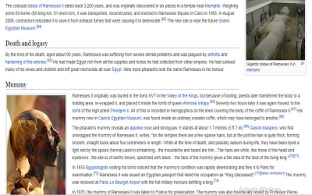
While Merneptah was buried in KV8, his mummy was found in the KV35 tomb of the Amenhotep II which Victor Loret discovered along with 18 other mummies and in 1907, at the Museum of Cairo, Dr G. Elliott Smith unwrapped and examined it.
what are the possibilities for new writers
During their visit in 1974, the archaeologists found that mummy’s condition was deteriorating and then it was deported to Paris as a king, issuing a passport. Where during the examination it was found that it was being attacked by a fungus, which was treated. Then some wounds and fractures in his body were confirmed by tests and scientific analysis. It was clear from the body that he was suffering from Arthritis badly. Recent studies also suggest that Ankylosing Spondylitis may be the cause. He was also suffering from Haunched back in the last decade of life, dental infections were confirmed as well and these things were considered the cause of death.
Ramses’ body was mummified
The examiners here paid particular attention to mummy’s thin neck. The x-ray revealed a wood stuck between his upper chest and head that was holding the head steady. It was concluded that since the people of Egyptian culture believed afterlife, people believed in life and would preserve themselves as mummies, in such a situation, they believed that if a body part is left, then the soul will not be able to exist in the life after death and during the mummification process, the head of the corpse may have been moved from its place, then they used wood to keep it stable.
The mummy was then sent back to Cairo where it was placed in the Museum of Cairo and was visited by Egyptian President Anwar Sadat and his wife. From here, an attempt to prove him to be Firon, associated with Moses began. The mainstay of which was sea salt traces found on mummy. Then there was no research on if this salt was part of the mummification process. This theory was implanted into Bucaille’s mind by Islamic scholar Yusuf Estes when Bucaille was talking about preserving the mummies over Merneptah’s mummy among scholars in the Museum of Cairo.

Now come to Maurice Bucaille. As per ‘Meem story‘ Bucaille was a Christian and had no knowledge of Islam or Quran beforehand (Yusuf Estes also insisted on it) while around this research Bucaille was the family physician of King Faisal and the royal family of Saudi Arabia and the then ruler of Egypt, Anwar Sadat, were also among his clients, who had given Bucaille a special exemption and facility for research on royal mummies. However, other researchers did not agree with the conclusion of the work at all, and they raised questions on this.
How to write a book in Microsoft word
Bucaille did not write about drowning in the first official report, but the book that he wrote later, “The Bible, the Quran and Science“, emphasized this, while emphasizing more upon religious prejudice than fact. Though the Islamic world welcomed the book, it was severely criticized outside Islam. It is believed that Bucaille did this trick by finding an easy chance to make a different identity in Islam and to increase his influence among rulers like Anwar Sadat and King Faisal and he got all that.
Claims of Muslims v/s facts
Now come to the claims of ‘Meem story‘. The claim is that Firon’s corpse was found on the side of the Red Sea, while this mummy was found in the tomb of Pinedjem II. It is claimed that this is the same Firon who was drowned in the sea chasing Moses but neither it is clear from the Quran nor the Exodus that whom Moses had a conflict with among Seti I, Ramses II or Merneptah. Because they all were Firon or Pharaohs and interestingly, none of them died due to drowning.
It is claimed that God preserved Firon’s corpse in a natural way, while the reality is that it is a mummy and has gone through the mummification process to this stage. It is claimed that sea salt traces on the mummies confirm that he died of drowning, but sea salt and baking soda mixture were part of the mummification process that was also found on other mummies.
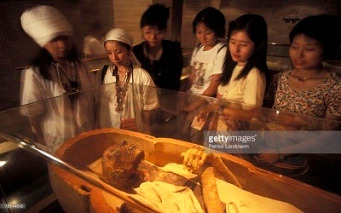
Then claim is that Firon associated with Moses was drowned in chasing Moses and his body was later taken out. Even if it is believed, the question arises that corpse would not have been left as unprotected as it was. While even the common priests of that era were mummified and preserved, then why would they not preserve their dead ruler? Although there is no evidence that his corpse was taken out after drowning, then left unprotected or safe. Secondly, this story is also mythological, originating from the Exodus and there is no description of this story with any other ruler of that period.
And yet, even if all the claims including Bucaille’s (except for the natural reserve / mummified part, because the mummy is proved) are believed, then how can a mummy be a lesson to anyone? This was human workmanship and was an art for the ancient Egyptians, with the help of this not only the royal family, the rich people of the state, the priests but also the common well-to-do people used to secure their bodies. The witness of which are many mummies still present. What is a miracle in them? On the official website of Egypt’s Department of Archeology, you can read about Ramses and other mummies that no one was died by drowning in the sea.
Click here to read the next part of this article
इस लेख को हिंदी में पढ़ने के लिये यहाँ क्लिक करें
1 note
·
View note
Text
King "psusness
King “psusness
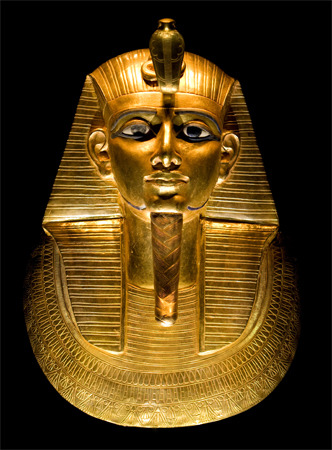
King “psusness
Pharaoh
Reign 1047–1001 BC (21st Dynasty)
Predecessor Amenemnisu
Successor Amenemope
Royal titulary
Consort Mutnodjmet, Wiay
Children Amenemope, AnkhefenMut, Isitemkheb
Father Pinedjem I
Mother Henuttawy
Died c. 1001 BC
Burial NRT III, Tanis Monuments Great Temple of Amun, Tanis (now in ruined fragments)
View On WordPress
0 notes